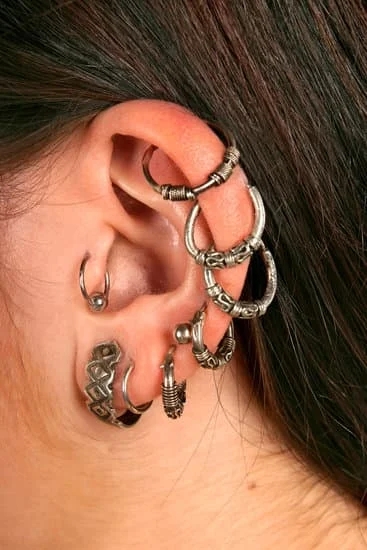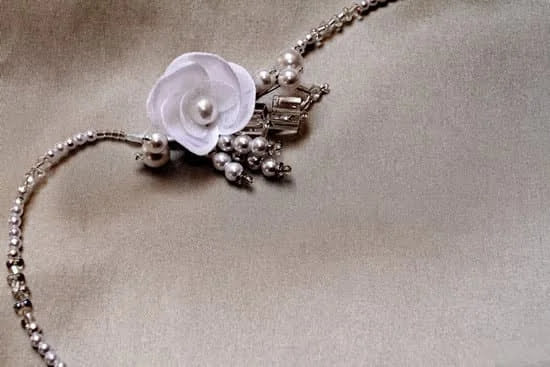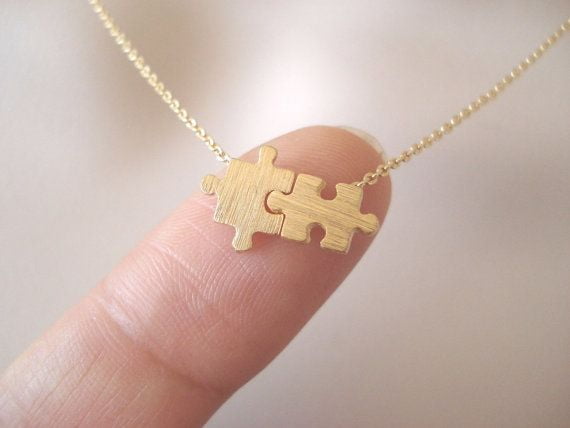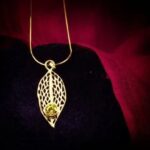Gold plated jewelry is a beautiful and affordable option for those who desire the elegance of gold without breaking the bank. However, over time, this type of jewelry can lose its shine and luster. In this article, we will guide you through the process of restoring your gold plated jewelry at home, allowing you to bring back its original beauty.
Firstly, it’s important to understand what gold plated jewelry is and why it requires restoration. Gold plated jewelry consists of a base metal coated with a thin layer of gold. While the gold plating adds a luxurious touch to the piece, it can wear off or become tarnished with regular use. This can lead to a dull appearance and diminished allure.
Restoring gold plated jewelry is crucial in order to regain its original splendor. By taking the time to care for and restore your pieces, you can enjoy their brilliance for years to come. Additionally, by learning how to restore your own gold plated jewelry at home, you can save money on professional cleaning services while still achieving remarkable results.
In the following sections, we will provide step-by-step instructions on assessing the condition of your gold plated jewelry and preparing the necessary materials and supplies for restoration. We will also guide you through gentle cleaning techniques, handling tarnished plating, restoring scratches, reviving faded color, and offer long-term care tips to maintain your restored jewelry’s beauty. With our comprehensive guide, you’ll have all the information needed to successfully restore your gold plated jewelry in no time.
Assessing the Condition of Your Gold Plated Jewelry
To restore gold plated jewelry at home, it is essential to first assess the condition of the pieces. This step will help determine the specific restoration techniques needed and ensure that the process is done effectively. Here is a step-by-step guide on how to assess the condition of your gold plated jewelry:
- Start by examining the overall appearance of the jewelry. Look for any signs of discoloration, tarnish, scratches, or fading color. Take note of any areas that require special attention.
- Check for tarnishing on the surface of the gold plating. Tarnish often appears as a dull or darkened layer on top of the metal. This can be caused by exposure to air, moisture, or chemicals.
- Inspect for scratches on the surface of the gold plating. Use a magnifying glass if necessary to identify any fine scratches that may not be noticeable at first glance.
- Assess if there is any fading in the color of the gold plating. Over time, gold plated jewelry may lose its vibrant color and appear dull or worn out.
By thoroughly assessing each piece of gold plated jewelry, you will have a clear understanding of its condition and be able to determine which restoration techniques will be most effective.
Once you have completed this assessment, you can proceed with gathering the necessary materials and supplies for the restoration process.
Preparing the Necessary Materials and Supplies
To effectively restore your gold plated jewelry at home, it is essential to gather the necessary materials and supplies beforehand. By preparing in advance, you can ensure a smooth restoration process and achieve desirable results. Here are some key items that you will need:
- Soft cloth: Using a soft cloth is crucial as it helps prevent scratches while cleaning your jewelry. Microfiber cloths are highly recommended for their gentle touch on delicate surfaces.
- Mild soap: Opt for a mild soap or dishwashing liquid to avoid any harsh chemicals that could damage the gold plating. Be sure to dilute the soap in lukewarm water before using it to clean the jewelry.
- Jewelry cleaner: There are various types of jewelry cleaners available in the market specifically formulated for gold plated jewelry. These cleaners can be effective in removing stubborn stains and dirt.
In addition to these essential items, there are a few other tools that can come in handy during the restoration process, especially for intricate areas:
- Non-abrasive brushes: Sometimes, dirt may accumulate in hard-to-reach places of your jewelry. Having non-abrasive brushes like makeup brushes or soft toothbrushes can help gently remove debris without causing any damage.
- Toothpicks or cotton swabs: These fine-pointed tools are useful for cleaning narrow gaps between stones or detailing on your gold plated jewelry without scratching or leaving fibers behind.
By having these materials and supplies readily available, you will be well-equipped to begin restoring your gold plated jewelry effectively and safely at home. Remember, each item serves a purpose in terms of gentle cleaning and maintaining the integrity of the delicate gold plating during the restoration process.
In the next section, we will discuss different cleaning techniques that you can use with these materials to restore your gold plated jewelry’s shine and beauty effectively.
Gentle Cleaning Techniques for Gold Plated Jewelry
Gold plated jewelry, like any other type of jewelry, requires regular cleaning to maintain its shine and beauty. However, it is crucial to use gentle cleaning techniques to avoid damaging the delicate gold plating. In this section, we will explore the proper way to clean gold plated jewelry without causing any harm.
Firstly, it is important to gather the necessary materials for cleaning your gold plated jewelry. You will need a soft cloth, mild soap, lukewarm water, and a microfiber cloth. It is essential to choose a mild soap that does not contain any harsh chemicals or abrasive particles that could scratch the surface of the jewelry. Additionally, you can also consider using a non-abrasive brush or toothpick for hard-to-reach areas or intricate detailing.
To start the cleaning process, fill a small bowl with lukewarm water and add a few drops of mild soap. Mix it gently until it forms a soapy solution. Then, dip your soft cloth into the soapy water and wring out any excess liquid. Gently wipe the surface of your gold plated jewelry with the damp cloth. Make sure to remove any dirt or grime without applying too much pressure.
Next, rinse off the soap residue from your jewelry under running lukewarm water. Be careful not to submerge your gold plated jewelry completely as prolonged exposure to water can damage the plating. After rinsing, pat dry your jewelry using a clean microfiber cloth to prevent any water spots or stains.
It is important to note that while these gentle cleaning techniques can effectively remove dirt and grime from your gold plated jewelry, they may not be suitable for heavily tarnished pieces or those with deep scratches. For such cases, you might need more specialized restoration methods which will be discussed in later sections.
By following these gentle cleaning techniques regularly, you can keep your gold plated jewelry looking its best and help prolong its lifespan. Remember that prevention is always better than restoration, so it is advisable to take off your gold plated jewelry before engaging in activities that may expose it to harsh chemicals or excessive friction. With proper care and maintenance, you can enjoy your lovely gold plated jewelry for years to come.
Dealing with Tarnished Gold Plating
Tarnish is a common issue that many gold plated jewelry owners face. Tarnish occurs when the outer layer of the gold plating oxidizes, resulting in a dull and discolored appearance. Fortunately, there are effective techniques to deal with tarnished gold plating and restore its original shine.
Causes:
- Moisture: Exposure to moisture, such as sweat or water, can accelerate the tarnishing process.
- Chemicals: Contact with harsh chemicals like perfume, lotions, or cleaning products can cause the gold plating to tarnish.
- Air exposure: Leaving your gold plated jewelry exposed to air for extended periods can contribute to tarnishing.
Removing Tarnish:
- Baking soda paste: Create a paste by mixing baking soda with water until it forms a thick consistency. Gently rub the paste onto the tarnished areas using a soft cloth or non-abrasive brush, then rinse with lukewarm water and pat dry.
- Vinegar soak: Fill a small bowl with equal parts white vinegar and warm water. Submerge your tarnished jewelry in the mixture for about 15 minutes, then gently scrub off any remaining tarnish using a toothbrush or cotton swab. Rinse thoroughly with water and dry with a soft cloth.
- Lemon juice solution: Squeeze fresh lemon juice into a bowl and add an equal amount of lukewarm water. Soak your jewelry for around 10 minutes before gently scrubbing away any tarnish with a soft brush or toothbrush. Rinse well and pat dry.
Prevention is key to avoiding future tarnishing of your gold plated jewelry. Here are some tips:
- Remove jewelry before engaging in activities that involve moisture or chemicals, such as swimming or applying skincare products.
- Store your jewelry in an enclosed space like a jewelry box to minimize air exposure.
- Avoid wearing gold plated jewelry while exercising or doing household chores to prevent contact with sweat or cleaning agents.
By following these techniques and preventive measures, you can effectively deal with tarnished gold plating and maintain the beautiful appearance of your jewelry. Remember to always handle your jewelry gently and avoid using abrasive materials that may damage the delicate gold plating.
Restoring Scratches and Maintaining Shine
One of the common issues that gold plated jewelry faces over time is the occurrence of scratches. These scratches can diminish the overall shine and beauty of the jewelry, making it appear dull and worn out. Fortunately, there are several methods available for removing these minor scratches and maintaining the shine of your gold plated jewelry.
To remove minor scratches from gold plated jewelry, one method is to use a non-abrasive cleaner specifically designed for delicate metals like gold. These cleaners are typically available in the form of creams or solutions. Begin by applying a small amount of the cleaner onto a soft cloth and gently rubbing it onto the scratched area in circular motions. Be sure to follow the instructions on the cleaner regarding application and washing off residue.
Another technique to remove minor scratches is by using toothpaste. Squeeze a small amount of toothpaste onto a microfiber cloth and rub it into the scratched area using light pressure, again in circular motions. Rinse off any residue with lukewarm water and dry thoroughly with a clean cloth.
It is important to note that when attempting to remove scratches from gold plated jewelry, you should avoid using abrasive materials such as harsh chemicals or rough cleaning agents. These can further damage or wear down the plating, causing more harm than good. Additionally, always use gentle wiping motions and avoid excessive scrubbing which may cause further scratching or fading of the plating.
By following these techniques for removing minor scratches and maintaining shine, you can greatly enhance the appearance of your gold plated jewelry. Remember to keep your jewelry stored properly when not in use, as this will also help prevent unnecessary scratching or tarnishing. With regular care and maintenance, your gold plated jewelry will continue to radiate its original brilliance for years to come.
| Method | Description |
|---|---|
| Non-Abrasive Cleaner | Apply a small amount onto a soft cloth and gently rub into the scratched area in circular motions. Follow instructions on the cleaner for application and washing off residue. |
| Toothpaste | Squeeze a small amount onto a microfiber cloth and rub it into the scratched area using light pressure, in circular motions. Rinse off any residue with lukewarm water and dry thoroughly. |
Reviving the Color of Faded Gold Plating
Faded gold plating can be a common issue with gold plated jewelry, as the gold layer may gradually lose its vibrant color over time. However, there are specific techniques and solutions that can help revive the color of faded gold plating and restore your jewelry’s original beauty.
Understanding Why Gold Plated Jewelry Fades
Before diving into the restoration process, it’s essential to understand why gold plated jewelry fades in the first place. Gold plating involves depositing a thin layer of gold onto a base metal through a process called electroplating.
Over time, this gold layer can wear off or become tarnished due to exposure to moisture, chemicals, and even regular wear and tear. As a result, the once bright and rich color of the gold plating may start to fade and lose its luster.
Restoring Faded Gold Plating
To restore faded gold plating, you can use specific techniques or opt for professional-grade gold plating solutions. One method involves using a non-abrasive brush or toothpick dipped in warm soapy water to gently scrub the surface of the jewelry. This helps remove any dirt or debris that may be contributing to the fading color.
If this method doesn’t yield satisfactory results, you can consider using actual gold plating solutions designed for at-home use. These solutions typically come with detailed instructions on how to apply them effectively. It’s important to note that these solutions should be used with caution and following all safety guidelines provided by the manufacturer.
Remember that prevention is key when it comes to maintaining the color of your gold plated jewelry. Avoid exposing it to harsh chemicals or prolonged periods of moisture, as these can accelerate fading. Additionally, regularly cleaning your jewelry using mild soap and lukewarm water, as discussed in previous sections of this article, can help prevent further damage and maintain its vibrancy.
By following these steps and utilizing appropriate techniques and solutions, you can revitalize the color of your faded gold plated jewelry and enjoy its renewed brilliance once again.
Long-Term Care and Maintenance Tips
Preventive Measures for Long-Term Care
After restoring your gold plated jewelry, it is essential to implement preventive measures to minimize the need for constant restoration. By following these simple tips, you can ensure that your jewelry retains its shine and beauty for an extended period:
- Keep it away from harsh chemicals: Avoid exposing your gold plated jewelry to chemicals such as perfume, hairspray, and cleaning agents. These substances can cause discoloration and damage to the plating.
- Remove before activities: Take off your gold plated jewelry before engaging in activities such as swimming, exercising, or household chores. Exposure to sweat, chlorine, and abrasive materials can accelerate wear and tear on the plating.
- Be cautious with storage: When not in use, store your jewelry in a clean and dry place. Avoid storing multiple pieces together to prevent scratching or tangling. It is advisable to keep each piece in a separate pouch or box, preferably lined with soft fabric.
- Gentle handling: Handle your gold plated jewelry with care to avoid accidental scratches or damage. When putting it on or taking it off, be gentle and avoid pulling or tugging at delicate clasps or chains.
Regular Cleaning Routines
In addition to preventive measures, incorporating regular cleaning routines into your maintenance plan will help preserve the shine of your gold plated jewelry:
- Soft cloth wipe down: After wearing your jewelry, gently wipe it down with a soft cloth to remove any oils or residue that may have accumulated throughout the day.
- Mild soap cleaning: Periodically wash your gold plated jewelry using mild soap and lukewarm water. Create a soapy solution in a bowl and let the jewelry soak for a few minutes before gently scrubbing with a non-abrasive brush or toothbrush.
- Thorough drying: After cleaning, ensure that your jewelry is completely dry before storing it. Use a microfiber cloth to remove any remaining moisture, paying close attention to intricate areas where water can get trapped.
- Jewelry cleaners: For stubborn stains or buildup, consider using a specialized gold-plated jewelry cleaner. Follow the instructions provided by the manufacturer and exercise caution when using these products, as some may contain chemicals that could damage the plating if used improperly.
Safe Storage Practices
Proper storage of your gold plated jewelry is crucial for its long-term care and maintenance. Follow these safe storage practices to ensure that your jewelry stays protected:
- Individual storage compartments: If you have multiple pieces of gold plated jewelry, assign separate compartments for each item in a jewelry box or organizer. This will prevent them from scratching or tangling with one another.
- Soft fabric lining: Line the storage compartments with soft fabric or felt material to provide cushioning and minimize friction against the delicate surfaces of the jewelry.
- Avoid exposure to sunlight: When choosing a storage location, opt for a cool and dark area in your home. Direct exposure to sunlight can cause fading and discoloration over time.
By implementing these long-term care and maintenance tips, you can enjoy your restored gold plated jewelry for years to come while reducing the need for frequent restoration efforts. The proper handling, regular cleaning routine, and safe storage practices will help preserve its beauty and shine, allowing you to showcase your favorite pieces with confidence.
Conclusion
In conclusion, restoring gold plated jewelry at home is a simple and cost-effective way to regain its original beauty. By following the step-by-step instructions provided in this article, you can assess the condition of your jewelry, gather the necessary materials, and successfully restore it to its former glory.
Taking care of gold plated jewelry is essential to maintain its shine and prevent further damage. Through gentle cleaning techniques using mild soap and lukewarm water, you can remove dirt and grime without causing any harm. Additionally, for tarnished gold plating, utilizing common household items like baking soda, vinegar, or lemon juice can effectively remove tarnish and restore the jewelry’s luster.
Furthermore, scratches are a common issue with gold plated jewelry. Luckily, there are various methods available to minimize their appearance. From simple polishing techniques to more specialized products or services, you can easily restore your jewelry’s shine.
To ensure the longevity of your restored gold plated jewelry, implementing long-term care and maintenance practices is crucial. Regular cleaning routines and safe storage practices will greatly minimize the need for constant restoration. By following these preventive measures, you can continue enjoying your rejuvenated jewelry for years to come.
Restoring your own gold plated jewelry at home not only saves money but also allows you to appreciate the satisfaction that comes from bringing back its renewed brilliance. So go ahead and give it a try – enjoy the process of restoring your cherished pieces and revel in their restored beauty once again.
Frequently Asked Questions
Is there a way to restore gold-plated jewelry?
Yes, there is a way to restore gold-plated jewelry. However, it is important to note that the restoration process will depend on the condition of the jewelry and the thickness of the gold plating. If the gold plating has worn off or there are scratches, professional re-plating may be necessary.
This involves stripping off the old plating and applying a new layer of gold. It is recommended to find a skilled jeweler who specializes in this type of restoration to ensure the best results.
How do you make gold-plated jewelry look new again?
To make gold-plated jewelry look new again, several simple steps can be taken. Firstly, gently clean the jewelry using a soft cloth or a brush with mild soap and warm water. Avoid using abrasive materials or harsh chemicals as they may damage the delicate gold plating.
After cleaning, dry the jewelry thoroughly and ensure no moisture remains. Next, use a polishing cloth specifically designed for gold-plated items to gently buff away any tarnish or dullness from the surface. Finally, store your gold-plated jewelry in a separate compartment or pouch away from other jewelry to prevent scratches that could further diminish its appearance.
Can you fix tarnished plated gold?
Tarnished plated gold can be fixed by carefully removing the tarnish without damaging the underlying base metal or thin layer of gold plating. Start by mixing a gentle solution of mild dishwashing soap and warm water in a small bowl or sink. Submerge your tarnished plated gold item into this solution for a few minutes and then use a soft-bristled toothbrush or cloth to gently scrub away any tarnish buildup.
Rinse thoroughly with clean water and pat dry with a soft cloth afterwards. Avoid using abrasive cleaners or rough tools as these can remove or damage the gold plating. If tarnish persists, consult with a professional jeweler who specializes in cleaning and restoring plated gold items to ensure safe and effective removal of tarnish while preserving the quality of your jewelry piece.

Welcome to my jewelry blog! My name is Sarah and I am the owner of this blog.
I love making jewelry and sharing my creations with others.
So whether you’re someone who loves wearing jewelry yourself or simply enjoys learning about it, be sure to check out my blog for insightful posts on everything related to this exciting topic!





